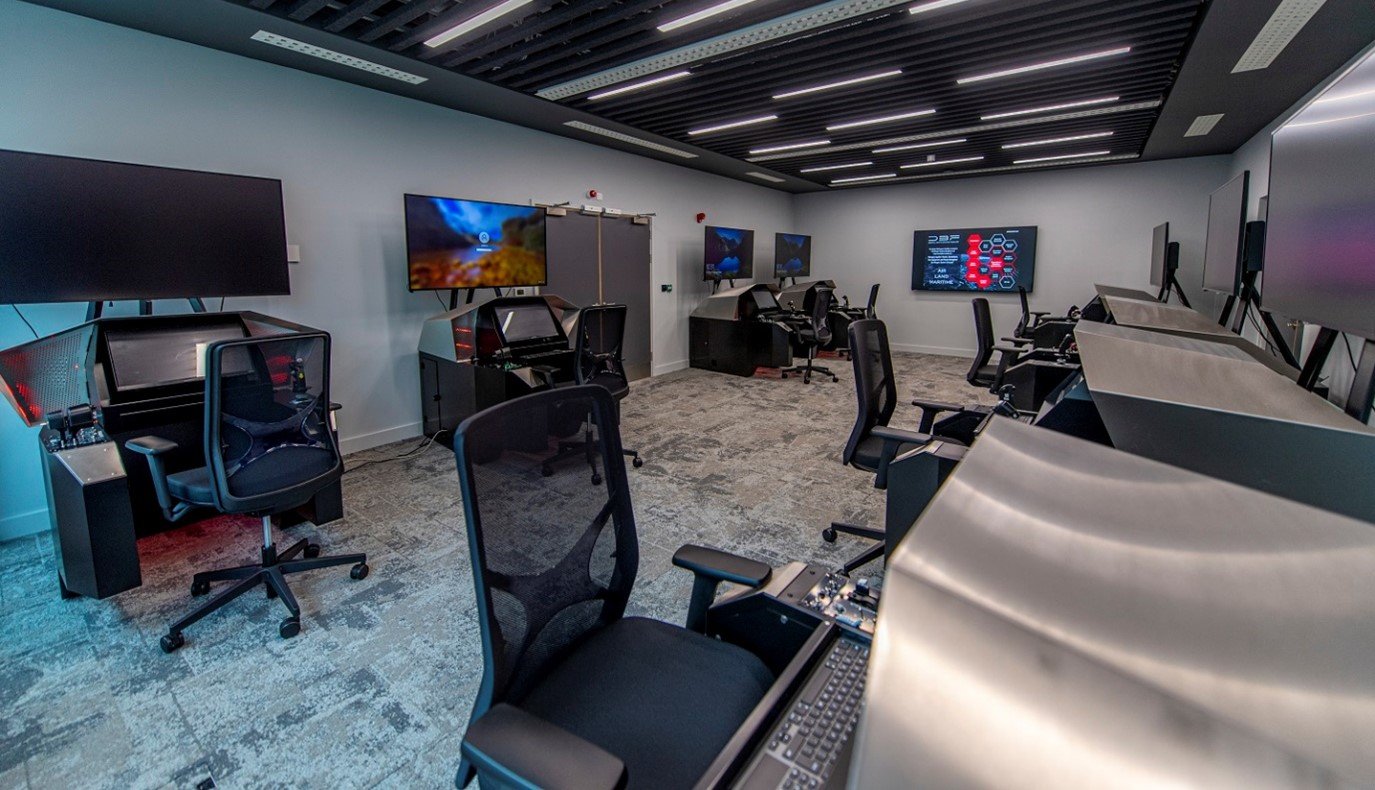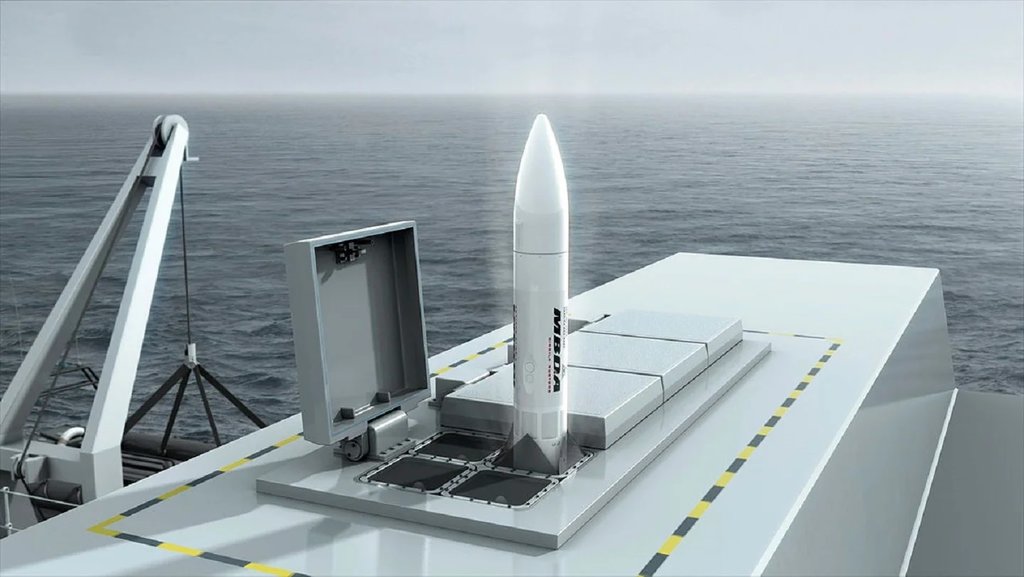Feature
Digital solutions: Europe’s defence mobilisation
Amid the upheaval in Europe’s security landscape following Russia’s large-scale invasion of Ukraine last year, the continent is mobilising its industrial base. Pan-European defence prime MBDA invited John Hill into its main UK site to highlight the company’s progress.

Image of the simulation hardware inside the MBDA Digital Battlespace Facility in Stevenage. Credit: MBDA
Earlier this year on 9 May the European Parliament fast tracked legislation to ramp up the EU’s ammunition output, as lessons continue to be learned from a changing securuty picture, not least of which has been the ability to stockpile munitions.
The Act in Support of Ammunition Production (ASAP) provides €500m ($535.9m) to help expand the continent’s defence industry in order to increase deliveries to Ukraine and replenish the stocks of member states, with MEPs aiming to approve the law by the end of July.
It likely takes a lot of pressure to push a bureaucracy such as the EU to expedite orders for muntions as the body makes a half-hearted effort to mobilise.
Torn between energy restitution and a stronger defence posture, Europe’s reluctance to mobilise was captured by the Polish Prime Minister, Mateusz Morawiecki, when he warned that “the collective West [wants] Ukraine to win – but not necessarily to the same extent.”
As Europe begins to accept its fate by doubling down and committing to Ukraine while shoring up its own stocks, the continent must also look to how it will maintain a competitive advantage in this brave new world.
If we can find those five or 10 things that – if we spend time on – we can affect 20 different tasks that account for what soldiers are supposed to do to perform their jobs that's something worthwhile if we can help focus their time
Joseph Patterson, OHWS programme manager

The President of the European Commission, Ursula von der Leyen (left), and the head of the European Defence Agency, Josep Borell (right), visiting wartorn Ukraine, 8 April 2023. Credit: European Commission.
What systems can give European countries the edge over Russian or Chinese aggression, while keeping in mind the cost, the timing and the capability? These are three fundamental factors defence companies must grapple with if they are to deliver effectively.
The leading weapon systems supplier for Europe, MBDA UK, gave Global Defence Technology access to its solution to the new and emerging demands it currently faces.
MBDA UK now balances cost, time and capability for their customers with its new virtual simulation testing for its selection of weapon systems. The company’s Digital Battlespace Facility (DBF) has been fully operational for the past year.
The facility is designed to test, experiment and demonstrate systems and concepts in a simulated environment. The virtual space enables the company to provide the best weapon solutions as technicians can afford to think freely with concepts without fear of any practical risk.
However, the importance of understanding how the defence sector is changing is a key element in determining how best to provide for the sector.
A new approach to the defence market
“We are absolutely mobilising for a different paradigm,” Mike Mews, the director of UK Sales and Business Development at MBDA UK, stated.
The new paradigm will see defence companies try to balance cost, timing and capability – but to effectively deliver to meet the growing demands, companies must be more agile.
Isabella Antinozzi, research analyst at the Royal United Services Institute (RUSI), told Global Defence Technology some of the ways companies can increase their agility as European countries start rushing to purchase custom weapon systems.
First, countries purchasing new systems should provide better access for non-traditional defence suppliers and small to medium sized enterprises (SMEs).
“The culture of working within the defence sector is not yet calibrated to recognise and absorb innovation from lower-tier suppliers,” Antinozzi said.
Countries are finding innovative technological solutions from diverse sources, such as Milrem Robotics. The Talinn-based company has become a shining star in defence, with its uncrewed ground vehicles being a popular military asset, and the business was soon acquired by UAE’s EDGE Group defence conglomerate in February.
On the margins of Europe, even a formidable military supplier of robotic vehicles can be found.
This is also something the US Department of Defense (DoD) is discovering. In an effort to attract new entrants to its defence industrial base (DIB), the DoD plans to introduce regulations and legislation to diversify its innovation base, thereby widening its growing DIB to meet the new military demands that have come as a result of the “pacing challenge of China”.
Second, governments should provide a better requirement setting. Industry is to a large extent what governments have created through their behaviours and requirement setting.
“So a new form of leadership and associated values at the political, military and industrial levels will be essential to success,” Antinozzi added.
It will be important to avoid the standard hazards encountered in defence development projects.
Antinozzi drew an example from the UK Ministry of Defence (MoD), which has exaggerated the step-change improvements in capability that a new system will bring in order to impress external approving bodies, such as the Treasury. On the industry side, companies can be excessively optimistic about what they can deliver in the time and money parameters available, in order to enhance its chances of getting the work.

Image of MBDA's Sea Ceptor air defence system. The system shows CAMM missiles, which Poland has recently acquired for £1.9bn. Credit: UK Ministry of Defence.
However, sometimes clarity is attained. Poland’s recent deal with MBDA UK to acquire CAMM missiles and iLaunchers for its “Mała NAREW” air defence programme demonstrates a customer’s clear intentions for its systems.
When asked about its requirements setting, the Polish Armament Agency presented a clear vision of to Global Defence Technology.
“First and foremost the main goal of the Polish Armed Forces is to get rid of the post Soviet solutions in the area of air and missile defence,” the Agency said. “[We want to] establish the integrated air and missile defence system which will be built based on our own industry capabilities: like very short (VSHORAD) and short (SHORAD) air defence systems as well as in co-operation with our allies in short and medium (MRAD) air defence solutions.”
In response, Mews said now the country “is in our pipeline”, and that there can be greater industrial “acceleration in Poland” that caters to its sector specialties. MBDA UK can therefore provide the means for the country to integrate its own capabilities.
Third, smoother international co-operation is required. Successful international co-operation happens when we have strong and sustained leadership from the very top of participating nations and industry.
“Leaders need to show commitment, mutual confidence and respect, and work closely to hold their own staffs, the programme management agency and industry to account to deliver to performance, time and cost,” Antinozzi emphasised.
“This will require a lean, agile and empowered governance regime, enabling rapid and robust decision making. In terms of the new values, this will absolutely need to encompass a relentless ‘best for programme’ view to select the very best common equipment in each capability space.”
This will require political commitment and courage from the top of government, driving co-operation, innovation, best “bang for the buck” and sustained high-rate production capacity throughout the equipment life.
Digital Battlespace Facility
The opening of MBDA UK’s DBF marks a significant step toward digital twin technology. This emerging area will allow end-users to design, troubleshoot and enhance concepts in a virtual, risk-free environment.
The company emphasised that it has “been de-risking [its products] for years” with the DBF. Now fully operational, the company can derive its 20 years experience to market its wide range and diversely complementary products.
But MBDA also pointed out how digital solutions such as the DBF are still at a formative stage. One DBF technician noted that the UK Royal Air Force conducts 80% of its systems testing in reality while 20% of tests are simulated; “our aim is to switch these,” the technician stated.
The company is assured that the future weapon systems sector will require a digital backbone to showcase the interoperability and interactions of different systems. The virtual space demonstrates which weapons suit which platfoms and what systems could work together – no system is procured in isolation.
MBDA has the capacity to trial-and-error concepts that can be dovetailed together in the field for a more layered defence system.
For example, the UK MoD has two MBDA products in development: the Sea Ceptor air defence system, for Royal Navy Type 23 and 26 frigates, and the Dragonfire laser weapon. With the DBF, the company can formulate strategies that play these two weapon systems together in various scenarios, the DBF technician noted.

The entrance to MBDA UK’s Digital Battlespace Facility. Credit: MBDA UK
MBDA is situated at the centre of joint programmes currently under development and in production across Europe, including Storm Shadow, CAMM, ASRAAM, Brimstone, Meteor, Sea Venom, and Aster missiles, among others.
MBDA has reduced the types of missiles produced from 22 to five, with the products and concepts able to be adapted and advanced to integrate within next-generation European projects, such as the Global Combat Air Programme (GCAP) and the Anglo-French Future Cruise/Anti-Ship Weapon (FC/ASW).
Mews noted that “we are at the core of integration. We are feeding it all into GCAP.”
MBDA UK plays a significant role when it comes to integration. With Nato partners keen to interoperate and standardise certain systems, MBDA brings expertise to international industral co-operation.
Returning to Poland’s air defence deal, the Polish Armament Agency listed the products that are integrated into its air defence system, with the country’s multi layered integrated air and missile defence system (IAMDS) consists of VSHORAD, SHORAD and MRAD systems.
“The core of IAMDS is MRAD WISŁA system based on IBCS with PAC-3 MSE missiles. The SHORAD layer consist of NAREW and PILICA+ with CAMM missiles, which will be integrated with IBCS as well.
“The lowest layer - VSHORAD is delivered by MANPADS PIORUN and some capabilities from PILICA+ system. In the future Polish IAMDS will be supplemented by Counter UAV systems and low cost missiles and other solutions,” the Agency specified.
Simulation is the key to success
A GlobalData report on Digital Twins (2020) suggests that simulation solution is an evolving practice that is still at a formative stage. “To truly fulfill their potential, digital twins must quickly evolve into a meaningful construct and not just another technology concept in the broader Internet of Things (IoT),” the report asserts.
Now that it is operating at full capacity, the DBF is a meaningful construct as it provides a “paradigm” shift – to reinforce Mews’ point. With it, MBDA can strip away all the extra expense, time and effort to arrange live firings, pose various different scenarios and prevent showcasing capabilities that are better left hidden to most eyes.
MBDA can now deliver more effectively – with cost, timing and capability in mind – as the DBF overcomes the problematic details that go into the production of high-end weapon systems.